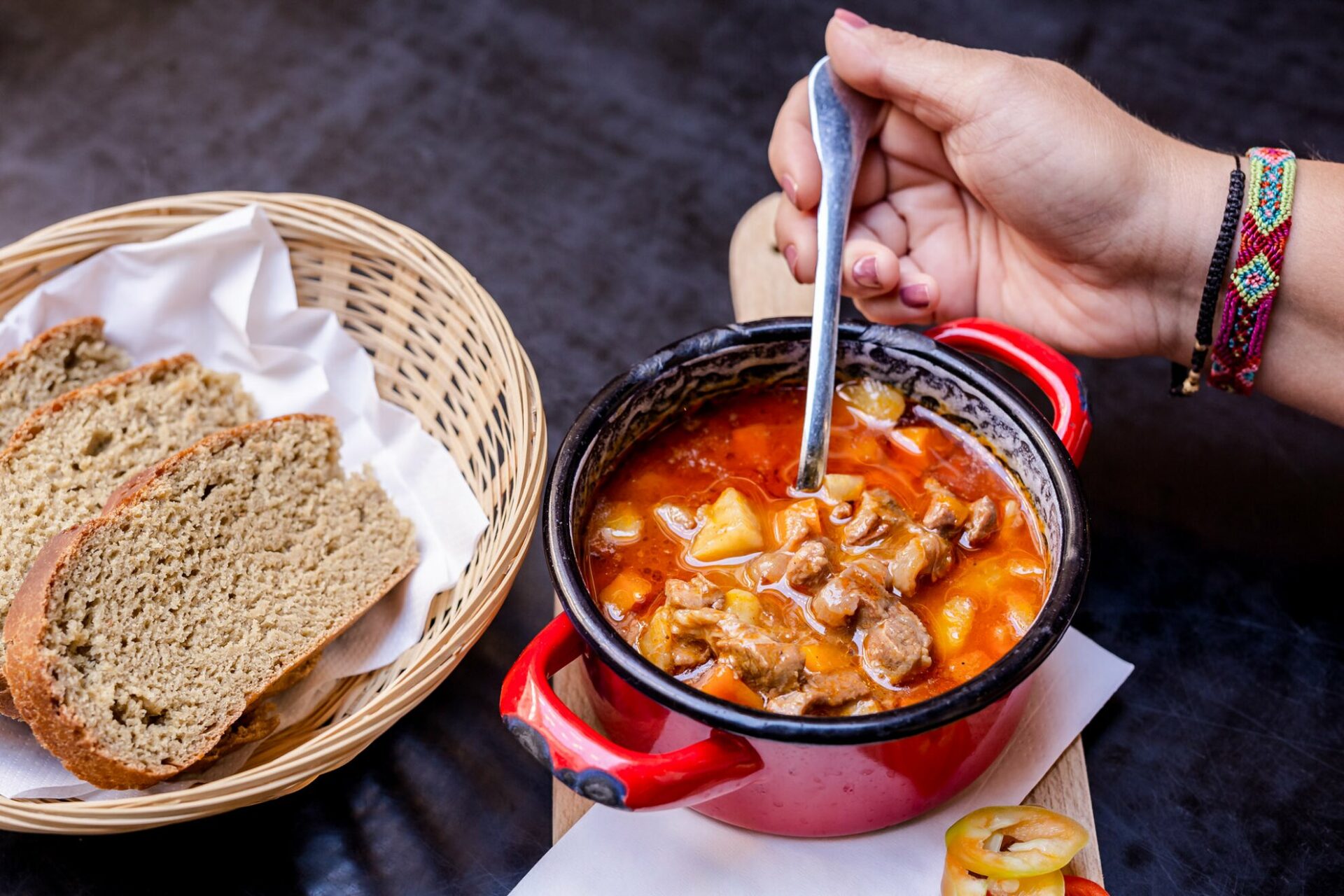
What to eat in Budapest: a real foodies’ guide to Hungarian cuisine
Hungarian cuisine is like its history: rich, varied, and exciting.
O
C
Like most nations, Hungary has a distinctive, characteristic cuisine too. Granted it may not be as globally recognized or consumed as Chinese, Italian, or Mexican, but that doesn’t mean it doesn’t deserve some appreciation. While most people have some ideas when they hear the words ‘Hungarian food’, most probably what comes to their minds is goulash, maybe chicken paprikash, or the generally shared vague notion that it’s mostly just meat, lard, and all in all unhealthy. And although there is some truth to these commonly held misbeliefs, Hungarian food is so much more than that. To debunk these myths and misinformation, we’re going to tell you all about the diverse, flavorful, and awesome foods that constitute Hungarian cuisine.
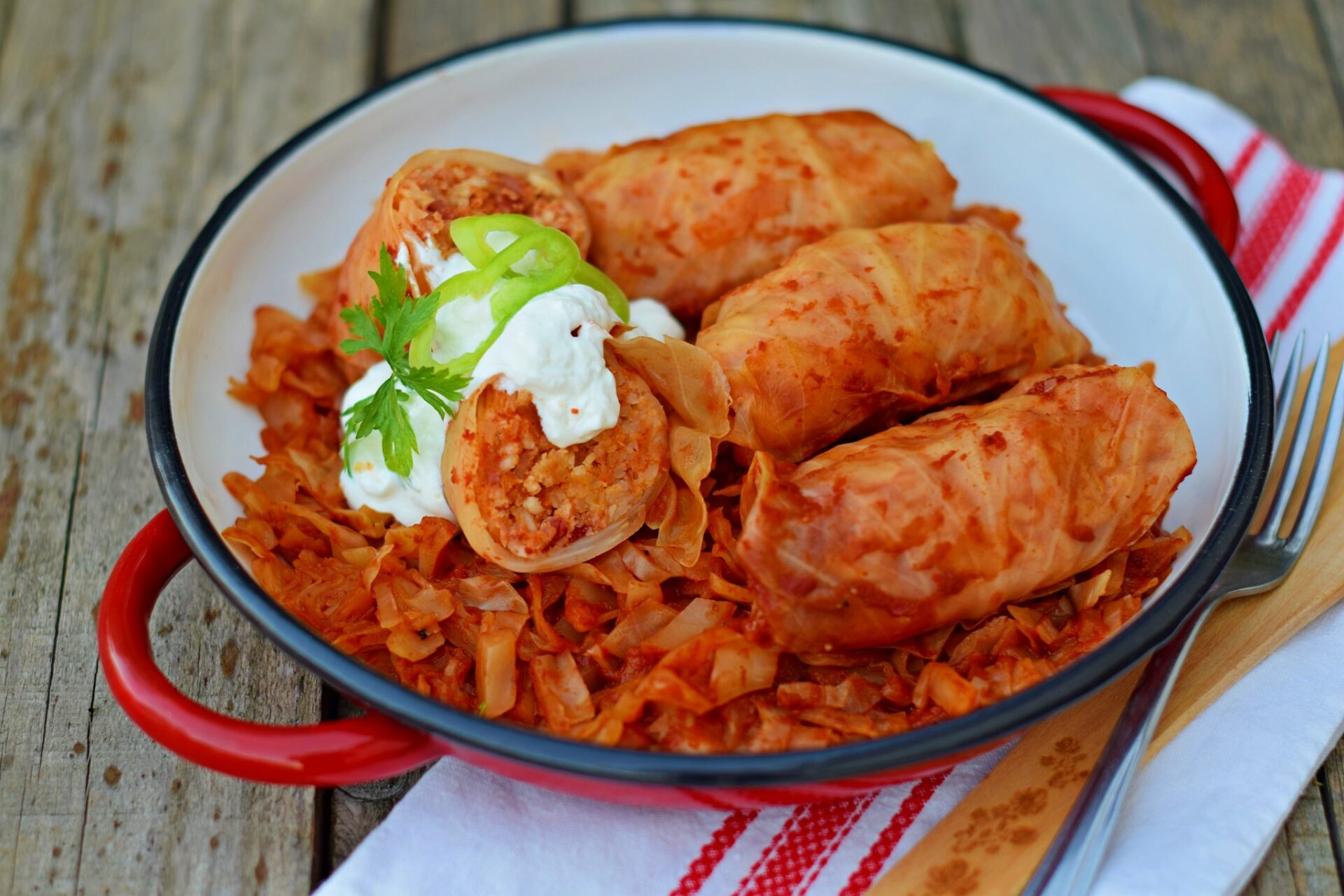
The basics of Hungarian cuisine
Before we get to the staple Hungarian dishes, it’s worth talking a bit about the cuisine itself and the ingredients that characterize them. The number one spice that lends Hungarian food its characteristic flavor is paprika. As a matter of fact, even though this spice had been cultivated in countries like Mexico, Spain, and Portugal hundreds of years before it became popular in Hungary, this tiny country has become a major exporter of paprika. In fact, it has become so notoriously ‘Hungarian’ that many visitors buy it in fancy, decorated tins as souvenirs.
Fun fact:
In Hungarian, the word ‘paprika’ is only used for the pepper itself (no matter the color, shape, or size), so don’t get confused if you’re in the vegetable aisle and see a bunch of different peppers labelled ‘paprika’. When they talk about paprika, they almost exclusively refer to it as ‘pirospaprika’ (red pepper) or maybe ‘fűszerpaprika’ (spice pepper), but mostly the former.
It’s also important to note that most Hungarian dishes are heavily meat-based. The three most popular types of meet in Hungary are chicken, pork, and beef, with the first two ranking high above the latter for most. As for seafood, Hungarians are not particularly known for being avid fish eaters, let alone fruit of the sea. However, there are two widely-consumed exceptions: harcsapaprikás (catfish paprikash) and halaszlé (fisherman’s soup usually made from carp or catfish). You’ll find these listed on the menu in most restaurants, but they’re significantly outweighed by the number or chicken, pork, and beef dishes.
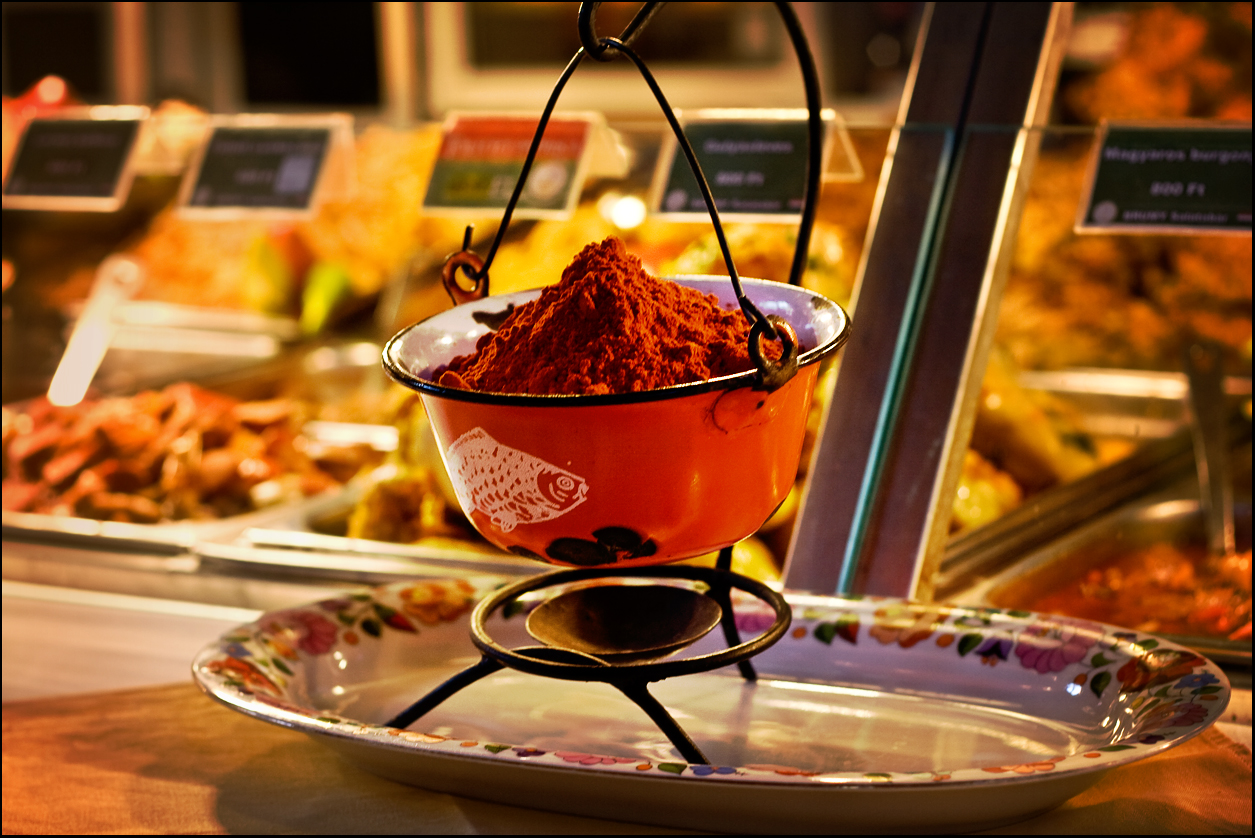
In addition, whatever you choose, prepare for a delicious meal with intense flavors and a wide range of spiciness – yes, Hungarians like their food hot, but don’t worry: most places prepare the food mild, to which you can dose the spicy agent (hot pepper, hot pepper paste, ground chili pepper, etc.) yourself.
The most Hungarian foods in existence
Now that you know what makes a dish ‘Hungarian’, it’s time to examine the most popular contestants one by one. So, let’s bib up and dig in!
Gulyás
For starters, we’re taking a close look at what’s probably the most globally well-known Hungarian dish in the world, goulash. Goulash is an incredibly flavorful, hearty soup made from vegetables (usually potato, carrots, and parsley), beef (which is sometimes swapped for veal or pork), and a generous amount of spices, such as garlic, cumin, and paprika. This will probably sound like we’re overselling it, but believe us: a bowl of hot gulyás is basically a comforting Eastern European hug with delicious, melt-in-your-mouth meat. Don’t forget to have some fresh white bread with it and dunk it in there to soak up the remaining soup from your bowl. The flavor is indescribable.
Fun fact:
If you compare the anglicized name with the original, you’ll notice that it’s missing the ‘y’ after the ‘l’, which changes the pronunciation to ‘gouyash’ in Hungarian. Since it’s just as easy for an English speaker to say as ‘goulash’, we’re not sure what happened to that poor ‘y’ there, but if you want to impress your waiter, be sure to say gouyash instead of goulash.
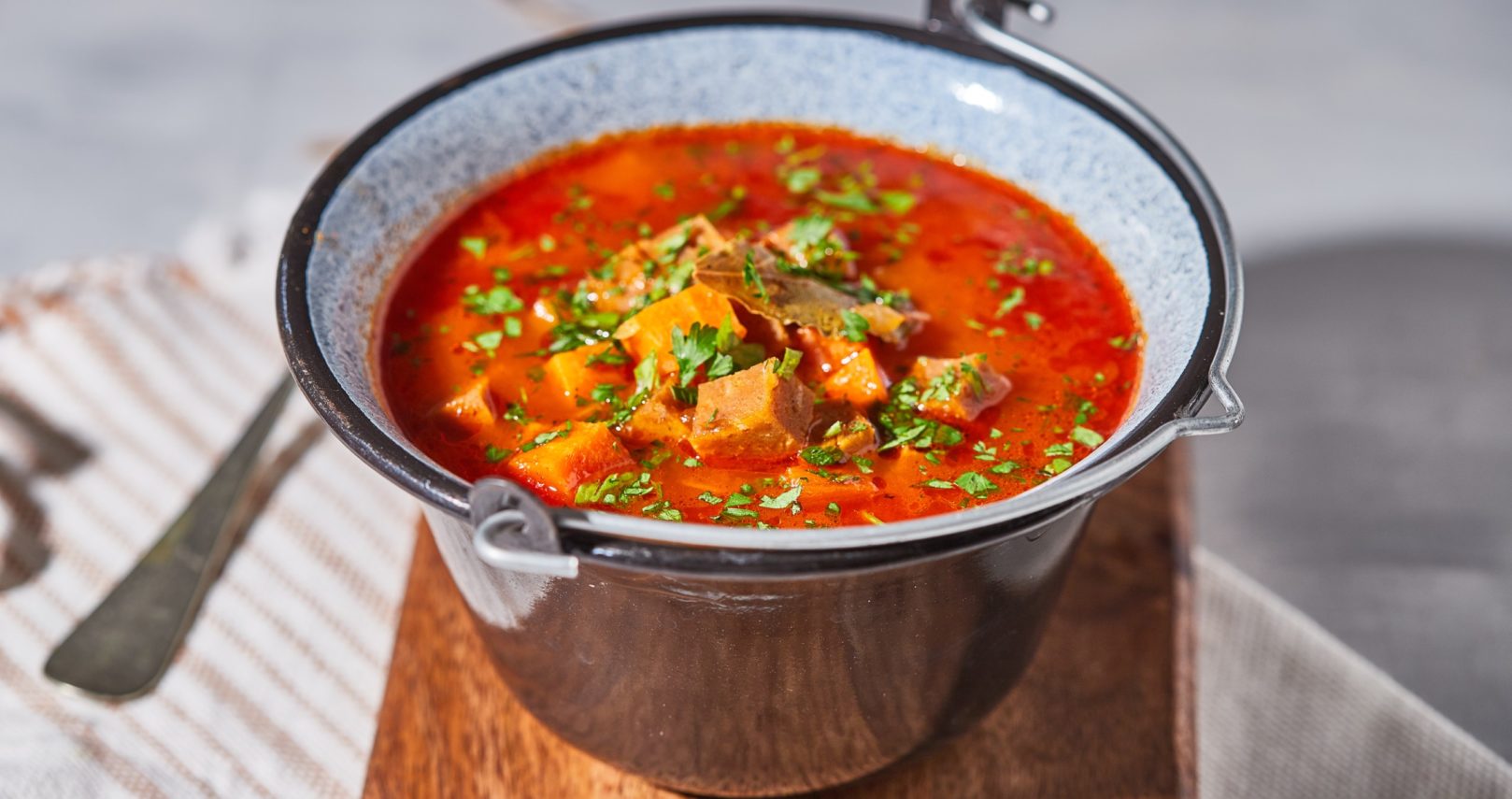
Csirkepaprikás (or paprikás csirke)
Chicken paprikash, as you may know it, is another classic Hungarian dish that’s fairly well-known abroad and is made from simple but typical Hungarian ingredients, such as the eponymous chicken (usually thighs, drumsticks, and wings) and paprika, as well as yellow onions, garlic, tomatoes, and sour cream. As for sides, chicken paprikash is mostly served with small Hungarian dumplings called nokedli or galuska. Do not confuse it with chicken stew, though – granted there is a substantial similarity between the two, chicken stew does not contain sour cream and it usually has a thinner sauce as opposed to its paprikash brother. To learn more about this amazing culinary staple and the places that prepare it best, click here.
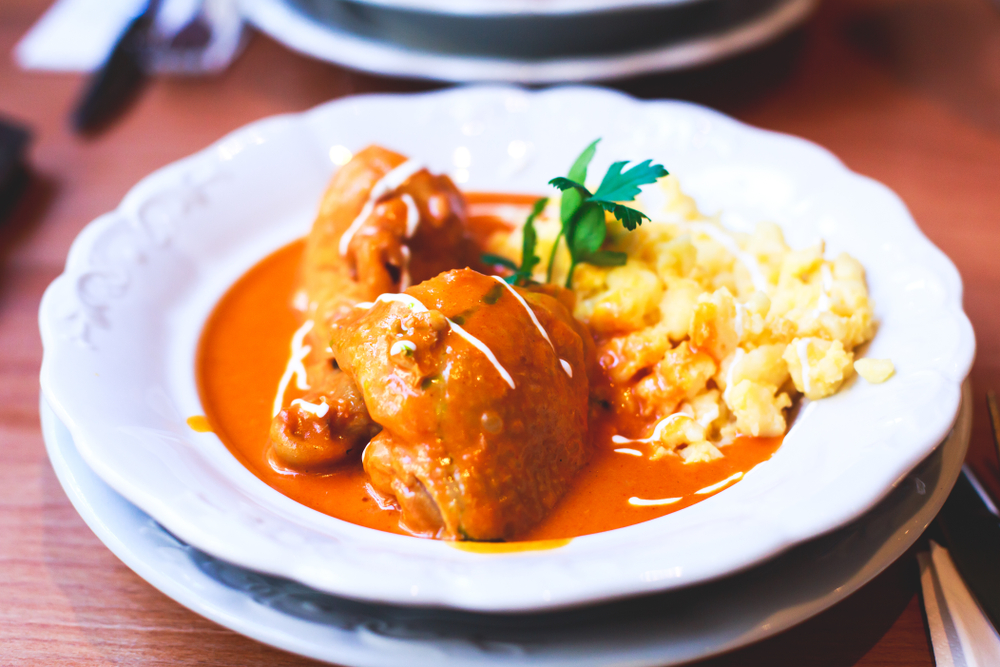
If you like the idea of a rich sour cream and paprika flavored sauce, but aren’t that into poultry, we recommend you go for a nice and big plate of harcsapaprikás (catfish paprikash). Usually served with cottage cheese dumplings or pasta, harcsapaprikás takes the signature characteristics of chicken paprikash to next level with the mild flavor of catfish.
Töltött káposzta
Whether or not stuffed cabbage is a Hungarian dish is a long-debated topic in Central-Eastern Europe, as it’s prepared and claimed by multiple countries in the region as their own. What undoubtedly makes Hungarian stuffed cabbage unique, though, is the generous use of – drum rolls, please – paprika in the making. Stuffed cabbage rolls are prepared by wrapping a mixture of heavily seasoned ground meat and rice with sweet or pickled cabbage leaves and cooking them together for hours. Then, when they’re served, they’re topped with a generous amount of sour cream as a finishing touch. Stuffed cabbage rolls is how Hungarians roll, so don’t miss it! And if you want to learn more about stuffed cabbage, there’s no better place to do it than our article.
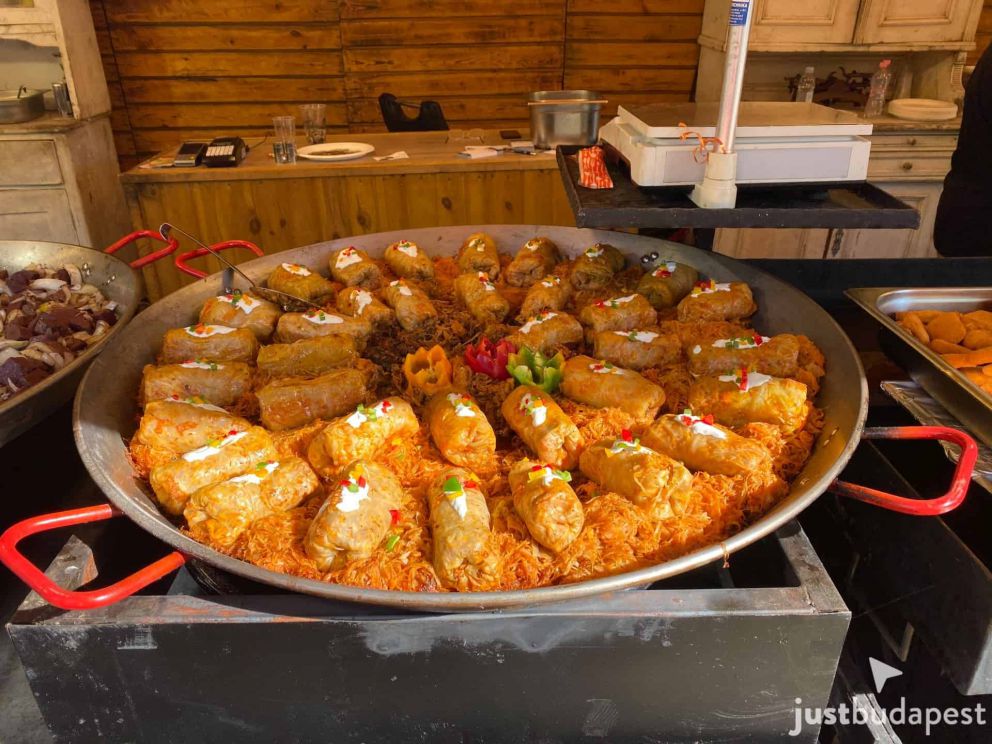
Halászlé
Fisherman’s soup is one of the few Hungarian dishes that’s made from fish, usually carp or catfish. While the ingredients are simple and fairly universal (fish, paprika, and onions), the two existing cooking and serving methods create a rather funny division in the small country. The two versions (one called Bajai style, the other Szegedi style) differ in that while the former is a thinner, clearer red soup served with noodles, the latter is thicker, sports a rusty red color, and is served with fresh white bread. If you want to find out more about the ways the fisherman’s soup and where to try both styles in Budapest, we suggest you read our article.
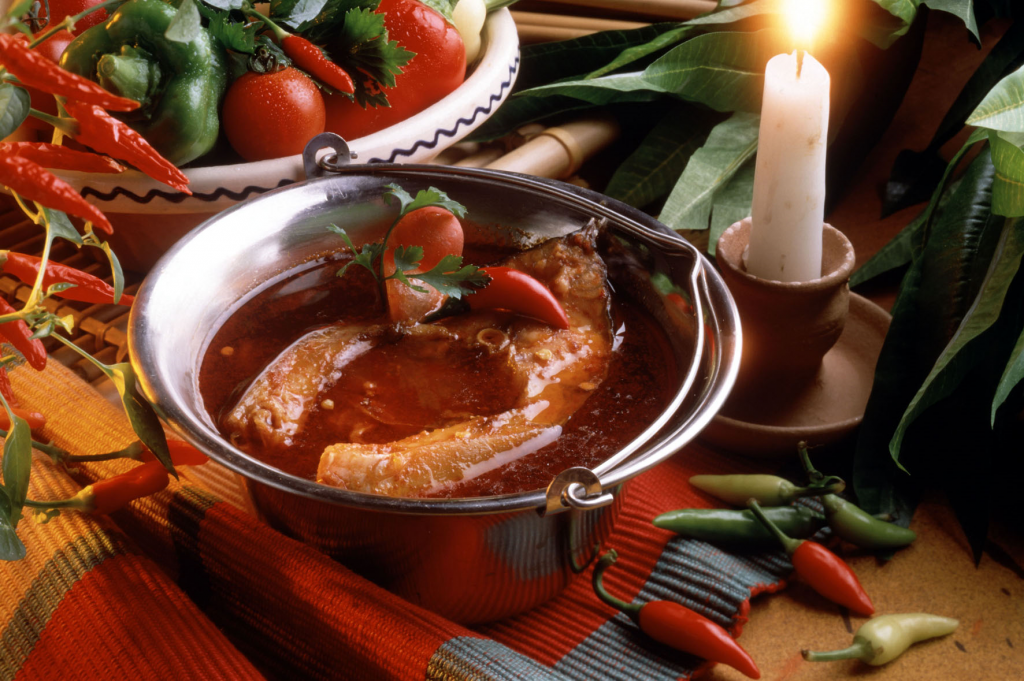
Lecsó
Hungarians’ response to ratatouille, lecsó (you may have seen it spelled lecho) is a vegetable based dish made from yellow peppers, tomatoes, onion, and paprika (shockingly). Although lecsó omits the French version’s eggplant and zucchini, the remaining ingredients create such a distinctive flavor that you won’t think for a second that something is missing – apart from some fresh white bread to dunk in it, of course. However, many households add their own twist to lecsó, such as bacon, sausage, or even cut up hot dogs for the added meat experience, mixing and cooking eggs into it for a hint of scrambled eggs flavor, or even serving it with rice.
Fun fact:
Lecsó actually serves as the basis or topping for multiple dishes in Hungarian cuisine, such as the eponymous ‘lecsós szelet’, which is actually a piece of cooked meat with some lecsó on top and potato or rice on the side.
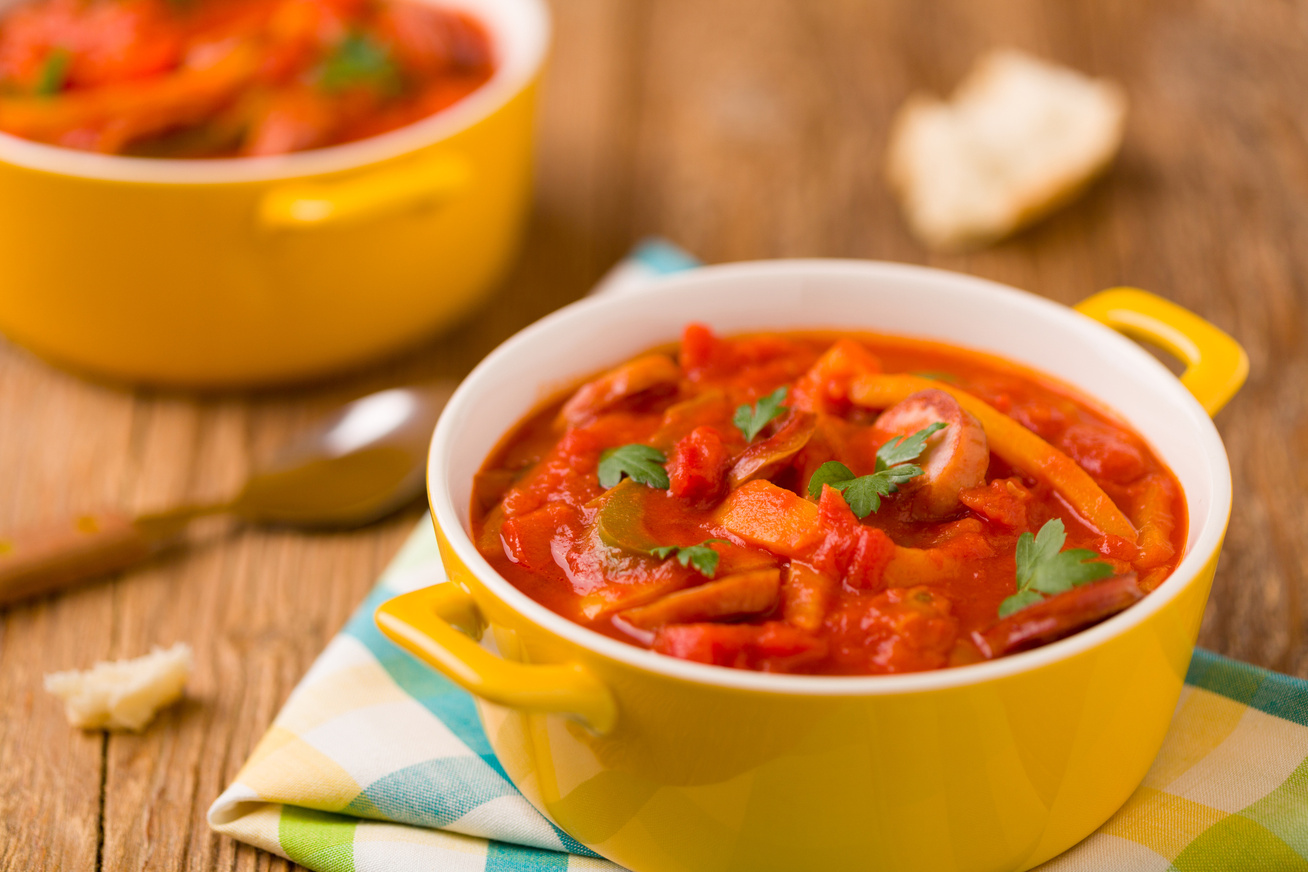
Lángos
Mainly consumed as street and beach food, lángos (pronounced langosh) is a traditional Hungarian deep-fried dough mostly topped with sour cream, cheese, and garlic. Other popular toppings include cottage cheese and dill, Bolognese sauce, beef stew, and even sweet varieties featuring Nutella and the like. Although lángos’s awesomeness has been in the public knowledge in Hungary for decades (with the earliest records of lángos’s existence dating back to the 15th century), its popularity has without a doubt increased in recent years, probably thanks to Budapest’s street food revolution. That’s right, resourceful culinary entrepreneurs discovered early that there is life beyond burgers and pizza slices, and thus lángos came, saw, and conquered. To learn more about Hungary’s take on street food and where to have it in Budapest, read our article on lángos.

Kürtőskalács
Kürtöskalács (or chimney cake), is a traditional sweet yeast dough cake mostly consumed as street food in Hungary. During the making, the dough is wrapped around a cylindrical baking spit, then held over open fire or placed in a special rotisserie-style oven until it’s baked golden brown on the outside and the caramelized sugar forms a shiny, somewhat crispy crust. Then, while the cake is still hot, it’s dipped in powdered cinnamon, cocoa, walnut, or other similar ingredients so it sticks on the outer surface. As if that weren’t enough, in some new-wave places, the hollow inside of the chimney cake of Budapest is stuffed with different fillings such as Nutella, whipped cream, or strawberry.
Fun fact:
Although Hungarian kürtőskalács originates from Transylvania (formerly part of Hungary), many European countries have their own traditional version and claim it as their own, just like they do stuffed cabbage. Since it would be impossible to take an unbiased stance on a website endorsing Budapest, all we’re going to say about that is that it’s nice that chimney cake can be enjoyed in so many places in the world. That being said, if you come to Budapest, you have to try the Hungarian version, because it’s the best!

Palacsinta
Let’s start with a confession: there’s nothing really unique or impressive about the way Hungarians make pancakes, it’s fairly similar to how British pancakes or French crepes are made. It’s the filling, however, where it gets interesting: Hungarian pancakes are generously topped with a wide variety of ingredients, such as jam, cocoa powder, powdered cinnamon, sweetened cottage cheese, or Nutella before they are rolled up, and are usually consumed as a dessert or, in some case, main course. But, if you’re looking for something fancier, let us recommend a special type of Hungarian pancake, Gundel palacsinta. Gundel palacsinta is stuffed with a rich walnut and zest based filling, then folded and topped with powdered sugar and a rum-induced chocolate sauce. If you ask us, it’s the ultimate go-to Hungarian dessert at a restaurant.

Overwhelmed by the options?
If you’re bent over backwards on which food to try, we’re not blaming you – the options are plenty. We suggest you check out Fat Boy Food Tour, an amazing walking tour that lets you experience Hungarian dishes and street food as the locals do. Team up with a real foodie and discover the best eateries in Budapest!
What to drink in Budapest
If you’ve had enough to eat, you’ll be pleased to know that Hungary has quite the reputation when it comes to alcoholic beverages, too. Whether you’re eyeing a shot of pálinka, the nation’s indescribably strong traditional fruit brandy, a glass of the country’s finest red or white, or even a pint of soothing hungarian beer, Budapest won’t let you down.
Want to experience Hungarian beverages right?
Should you have taken an interest in any of the above-mentioned beverages, but want a professional’s guidance on what to try, we’ve got good news: we’ve collected the best venues for pálinka, wine, and beer tasting for you in Budapest.
If you’re in Hungary, you should definitely try one of the locals’ favorite and special desserts, the chimney cake. The chimney cake of Budapest is one of the most delicious treats which is available in many flavors -it is definitely a must try!
Q&A
- Are there any famous Hungarian foods?
- Although not as widely-known as Italian, Chinese, or Mexican, Hungarian cuisine, too, has unique dishes that are popular throughout the world, like goulash, chicken paprikash, and fisherman’s soup.
- What are the most famous Hungarian dishes?
- The most famous Hungarian dishes include goulash, chicken paprikash, fisherman’s soup, stuffed cabbage, lángosh, and chimney cake.
Do you want to know everything about the Hungarian currency? Check our article in the topic!
Hungarian beer is known and loved all over Europe – and for good reason! Try these fine beers with centuries of history yourself when you visit Hungary.












Your experience is important.
Anything you have not found?
Ask a Question
Please log in to write a review.
There is no review yet.